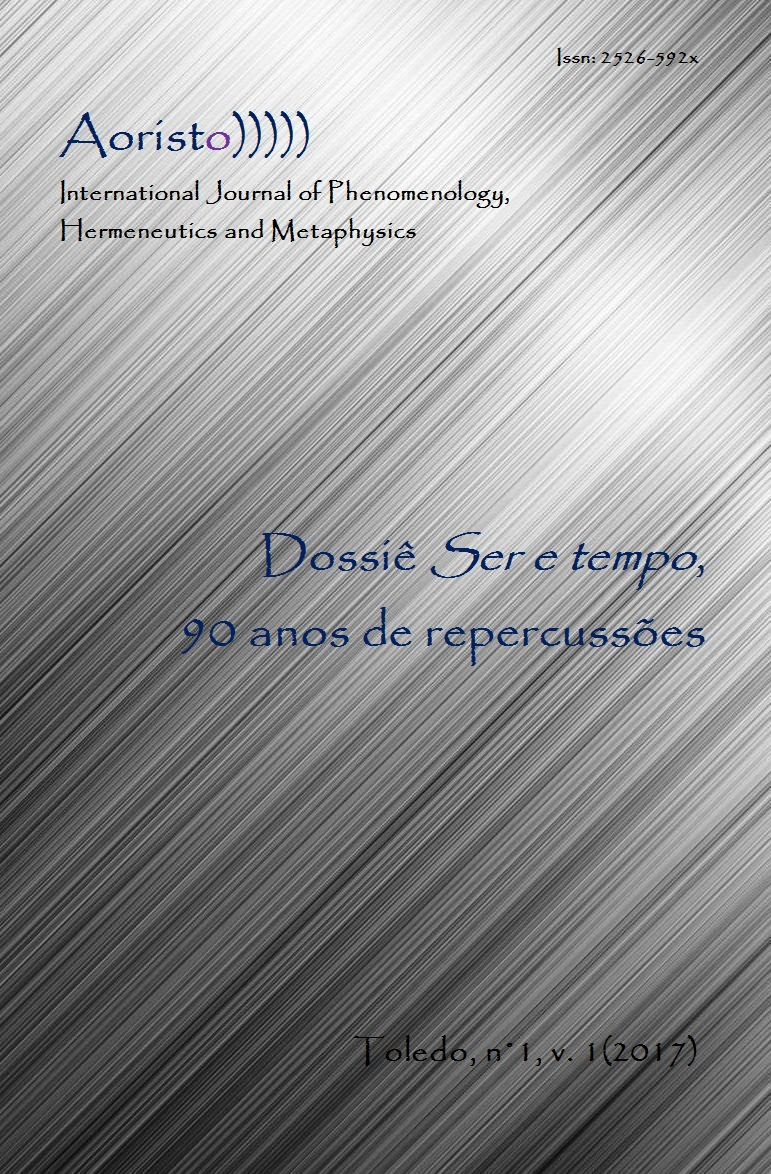Possibility and Interest: about Boredom in Kierkegaard
acerca do entediar-se em Kierkegaard
DOI:
https://doi.org/10.48075/aoristo.v1i1.16533Keywords:
Tédio, Possibilidade, Kierkegaard, Interesse, Clínica PsicológicaAbstract
Our goal in this text is to look for elements to understand the phenomenon of boredom within Kierkegaard's thinking. The motivation for this investigation comes from speeches increasingly present in the psychological practice that denounce a growing indisposition to act in the world. The relevance of this work lies in calling attention to the diversity of meanings an act can denote, in order to prevent us from being seduced by a superficial apprehension of boredom. Such exercise is essential for the improvement of clinical listening. For that we will take some of Kierkegaard’s figures or characters that give voice to different modalities of boredom inside the two volumes of the book Either-or. They are: Diapsalmata; The immediate erotic stages or musical-erotic; Rotation of crops; the seducers’ diary and the balance between the aesthetic and the ethical in the development of the personality. As a reference for our considerations, we will resort to the texts of Nuno Ferro (Kierkegaard e o tédio) and Fogel (Sobre homem e realidade). Fogel says that man, life, reality, existing materializes as different dispositions, ways of being in this reality of possibility to possibility. Ferro will show that being bored is being inert to possibilities. The possibilities are devitalized, thus they do not seem like real or imaginative possibilities.
Downloads
Published
How to Cite
Issue
Section
License

This work is licensed under a Creative Commons Attribution-NonCommercial-NoDerivatives 4.0 International License.
Copyright Notice
1. I grant the AORISTO – International Journal of Phenomenology, Hermeneutics and Metaphysics the first publication of my article, licensed under Creative Commons Attribution (which allows sharing of work, recognition of authorship and initial publication in this journal).
2. I confirm that my article is not being submitted to another publication and has not been published in its entirely on another journal. I take full responsibility for its originality and I will also claim responsibility for charges from claims by third parties concerning the authorship of the article.
3. I also agree that the manuscript will be submitted according to the Aoristo’s publication rules described above.
License Creative Commons
This work is licensed under a Creative Commons Atribuição-NãoComercial-CompartilhaIgual 4.0 Internacional, which allows you to share, copy, distribute, display, reproduce, in whole or in part, for as long as there is no commercial purpose, and authors and source are cited.


